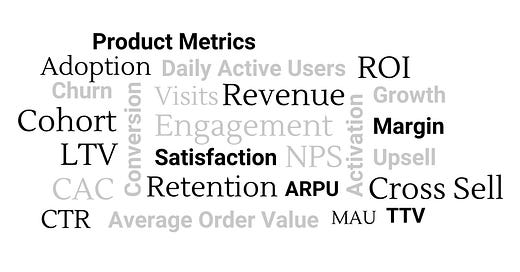Delivering Your Products with Precision in 2025
Setting Effective Product Metrics for Success in the New Year
Happy first day of Q4 to those of us for whom the calendar and fiscal years align! As we approach 2025, it's prime time to start planning and establishing metrics for your product teams. Let's dive into how these metrics can be set effectively.
Revenue: Not a Product Metric
First, let's address a common misconception: revenue is not a product metric. Those of us who've been in product for a while have experienced the chaos of having revenue as a North Star metric. Remember the frantic drills into sudden revenue drops, with product teams having little to contribute about the reasons?
The problem lies in revenue's lagging nature. While revenue is undoubtedly a goal for all, and every product team should consider how their product contributes to it, revenue itself is not a product metric. It's a lagging end result of products working well.
Setting the Right Metrics
One way to approach product metrics is to trace inputs into revenue. At a macro level, revenue typically comprises:
1. New revenue (from new users or accounts)
2. Retained revenue (from existing users and accounts who stay)
3. Sustaining revenue (increasing margins)
The first step is identifying which parts of revenue your product impacts. Core teams typically influence retention, internal teams affect margins, and growth teams drive new revenue.
Growth Teams
For growth teams, understanding activation and the "aha moment" is crucial. Think of Facebook's "7 friends in 10 days" – the moment when users experience enough value to form a habit. Activation usually involves multiple steps:
1. Sign up
2. Setup
3. Experiencing the "aha" moment
4. Returning enough times to understand full product value and form a habit
Growth teams should focus on maximizing these moments. A useful metric could be "Day 0 - Y active users," where Y is the average number of days it takes to form a habit. Other examples might include:
- "First value experienced" rate
- Time to first purchase
- Number of features used within first week
Product Categorization
Consider what type of digital product you're working with. Amplitude offers a helpful categorization:
1. Attention game (e.g., Facebook, Netflix)
2. Transaction game (e.g., Amazon, Walmart)
3. Productivity game (e.g., Salesforce, Adobe)
For each "game," lay out the touchpoints to a satisfying engagement and their measurement options. These often involve visits to certain sections and engagement levels. For transaction-focused products, conversion rates and their inputs are crucial.
Margin-Focused Teams
Teams concerned with margins have two main levers:
- Reducing costs
- Increasing revenue per customer
Cost reduction could involve automation or using less expensive components. Metrics might include:
- Time saved per unit
- Cost per transaction
- Infrastructure cost per user
Increased revenue per customer could come from upsells or different product packaging. Metrics here might include:
- Upsell conversion rate
- Average order value
- Feature adoption rate for premium features
Setting Targets and Planning Initiatives
Once metrics are established, it's time to create a plan for applying the available levers to move these metrics. This is where strategy offsites come in, allowing teams to collaborate and brainstorm initiatives that will differentiate them and impact their metrics.
The "trios" (typically PM, engineering lead, and design lead) should then set targets in collaboration with leadership and stakeholders. It's crucial to estimate what it will take to move the target and its potential impact on revenue.
A common mistake is setting KPI targets without considering the initiatives that will drive them, or making assumptions about projects without involving the teams responsible for execution. This often results in a lack of buy-in and reduces the probability of successful execution.
Let’s do it!
As we approach 2025, let's commit to being precise in our goal-setting and providing clear direction to our teams. By setting the right metrics, understanding our product's role in the broader business context, and involving teams in initiative planning, we can set ourselves up for success in the coming year.
Need help with your goal-setting or strategy sessions? I'm here to assist! Let's make 2025 a year of precision and success for your product teams.
The Weekly Shares:
Music Share:
In just one week we are seeing Kishi Bashi, right here in Brooklyn! That’s all I can think about musically:
Breathwork Share:
You might know that I’m a big fan of Othership. They have this amazing practice on youtube completely free. It explores self-love. We are worth it. If we cannot love ourselves we cannot love anyone else. Do it in your headphones!





